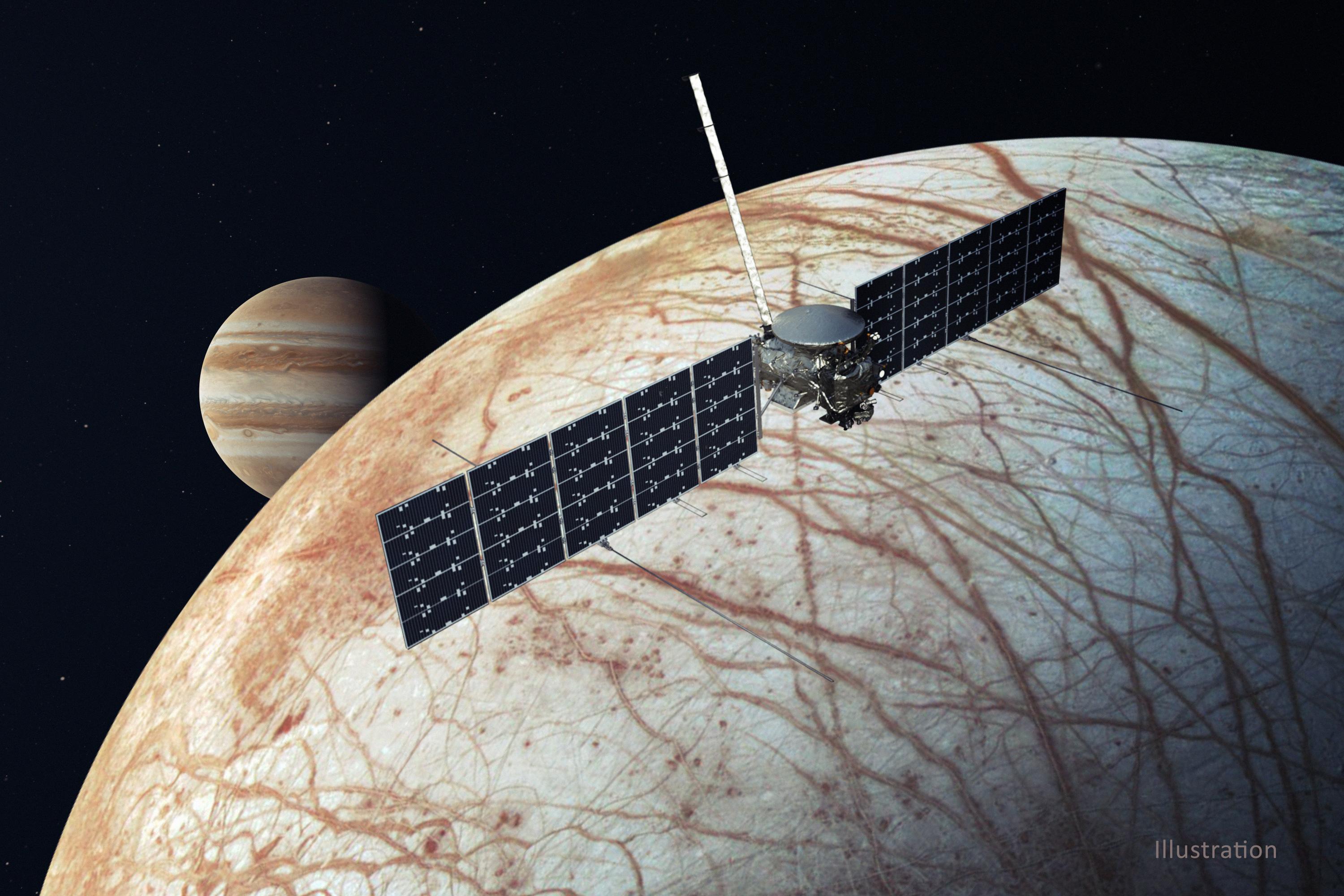Jul. 30, 2025
On June 25, 2024, China’s Chang’e 6 mission safely returned to Earth, becoming the first mission in the world to retrieve lunar samples from the far side of the moon. This feat represents one of many national and commercial efforts targeting the Lunar South Pole to explore a region that is believed to be rich in water ice, receives high levels of sunlight, and which may contain other strategically valuable rare earth materials such as titanium, aluminum, iron, and magnesium. As such, the Chang’e 6 mission represents the first of what will likely be many future missions.
Countries and companies seek to gain access to what is increasingly viewed as prime real estate for future space operations that may enable future scientific discovery and allow for significant commercial gain. However, this increase of lunar activities may very well spark an international crisis due to the absence of clearly defined rules and norms related to the moon. As more state actors and private firms develop plans and capabilities to establish a presence on the moon, the window for addressing these challenges prior to a crisis is closing. The United States and its allies should seek to engage China, Russia, and other spacefaring nations in an inclusive dialogue and put procedures in place to share information on potential norms and best practices, technical criteria, mechanisms, and procedures for engaging in lunar activities. This dialogue should incorporate information and experience from commercial actors involved in lunar activity, and it should remain flexible as we continue to learn about the lunar environment.
While China’s Chang’e 6 is remarkable for its scientific value, this mission also carries with it a reminder of the looming challenges surrounding geopolitical competition in lunar space. This competition raises a host of questions: Who can use and claim ownership to lunar resources? What rules and procedures should be established to avoid armed conflict between spacefaring actors? The answers to the questions have clear policy implications. Without a clear legal framework or norms, competition among commercial and national actors could trigger conflict in and among spacefaring actors.
Stress-Testing the Existing Space Governance Framework
To explore these critical issues — together with our colleagues Svetla Ben Itzhak, Gregory Miller, and James Clay Moltz — we led a tabletop exercise that envisioned a plausible crisis in 2029. This exercise, which included American regional and space experts with non-governmental and government experience, presented the following scenario: An Indian private company, Chandra Ltd., lands near Shackleton Crater and declares a 50-kilometer “safety zone” around its operations. This exercise was designed to intentionally invoke the language of “safety zones” articulated in the U.S.-led Artemis Accords, and which has been criticized by both Russia and China. Moreover, the exercise introduced a twist: By using a fictional Indian space company, it became clear that the language of the Artemis Accords created challenges not only for China and Russia but also for the United States. In the scenario, two other commercial entities, one American and one Chinese, had previously announced plans to land in the same region that had been covered within the Indian space company’s designated safety zone.
This fictional crisis was designed to stress-test the existing space governance framework and examine how a multi-stakeholder environment might respond. What we found was instructive: Clear rules did not emerge from the crisis. Instead, the focus was on the process of developing rules that were inclusive, fair, and adaptable. Moreover, the exercise raised important questions about the role of private actors in shaping lunar governance and suggested the importance of third parties with greater perceived neutrality in developing guidelines for preventing future conflict. More broadly, these findings suggest, as we highlight in our recent paper, that while there is flexibility and willingness to cooperate on developing a new lunar governance framework, states might not yet have well-formed views for negotiations. States are just learning about this evolving environment in which the strength of the norms around governance is unclear.
The Heart of the Matter: Safety Zones in a Legal Gray Area
The Artemis Accords, a non-binding set of principles developed by the United States and its partners and signed by over 50 countries to enhance the governance of civil exploration and the use of outer space, encourage the use of safety zones to promote transparency and reduce the risk of harmful interference with the activities of other actors. However, the accords do not specify the process of how to use a safety zone or how even to define one, beyond general guidance to leverage commonly accepted scientific and engineering principles. The concept of safety zones has proved controversial to other major spacefaring actors such as China and Russia, with some Chinese analysts characterizing it as a form of colonization and Roscosmos director Gen. Dmitry Rogozin likening it to the U.S. invasion of Iraq. Hyperbole aside, the contention is that a country could make de facto territorial claims, restricting the access of other actors to strategically valuable sites, under the guise of safeguarding scientific operations. At an even more fundamental level, the foundational Outer Space Treaty, upon which the Artemis Accords is grounded, requires parties to avoid harmful interference with others’ activities and leaves key terms such as “due regard” undefined.
This ambiguity leaves room for diverging interpretations. In our scenario, the U.S. team, which was divided into military and civil-commercial teams, viewed the safety zone as a useful, albeit imperfect, deconfliction tool. The U.S. team, however, worried that overly broad or unilateral declarations could amount to de facto territorial claims, thereby undermining the Outer Space Treaty. Participants representing India defended the declaration as a necessary operational step, arguing it was technical in nature and consistent with international norms. They asserted that Chandra Ltd.’s actions reinforced the Artemis Accords. In sharp contrast, the Chinese and Russian teams rejected the safety zone, arguing that such claims lack legal standing subject to review within an inclusive international environment and body. This position adopted in a fictional tabletop exercise mirrors Russia and China’s real-world opposition to the Artemis Accords. In the exercise, the Russian and Chinese teams were concerned not just about the size of the zone but about the precedent it set and the absence of a multilateral process to govern it. They saw Chandra Ltd.’s actions as an example of how a commercial company could exploit a governance structure to benefit the United States.
Commercial Actors at the Forefront — and Under Scrutiny
The exercise also shed light on challenges surrounding the role of private actors in lunar governance. While participants playing the roles of American and Indian representatives tended to see commercial actors as essential stakeholders — capable, innovative, and already embedded in state policy — the Chinese and Russian teams rejected their authority to establish operational norms. For them, the notion that a private company could constrain the activities of other states or companies, even under the guise of safety, was both legally and politically unacceptable.
As private missions increase in number and complexity, and as governments rely on commercial partners to achieve national objectives, this legal gray zone is becoming increasingly muddled and unstable. This reflects not only the exponential growth role of the commercial sector, which now accounts for the most launches worldwide, led by SpaceX, but also a broader challenge in the evolving field of space law. Under Article VI of the Outer Space Treaty, states are responsible for the activities of non-governmental entities. However, the treaty does not define the scope of that supervision or what constitutes adequate authorization and continuing oversight. Geopolitical competition among the United States, Russia, and China raises the stakes even further. At a broader level, Russian President Vladimir Putin’s opposition and threats to Starlink’s operation in Ukraine was one of the first major events to question the relationship between commercial actors and national assets, raising questions about whether a country could be held responsible for the actions taken by private companies.
One of the most important findings from the tabletop exercise was that absent shared procedures, space norms will be shaped by precedent rather than principle. In world politics, there is no central authority to enforce law and thus compliance is more closely related to the costs of defying power, politics, and peer pressure. These dynamics form the basis of customary international law and mean that states will oppose a behavior that could establish legal norms unfavorable to their interests. Thus, if activities that become precedent contradict principle and go unchallenged, these activities can redefine what is considered lawful.
The exercise also exposed a political dimension to commercial activity: It matters who makes the first move. The outcome of this exercise may have been very different, as many participants acknowledged, if the declarant had been a U.S., Russian, or Chinese company. India’s perceived status as a relatively neutral space actor muted some reactions, as the only major competitor represented was China.
Takeaways
Our exercise serves as a cautionary tale: The United States and other leading spacefaring nations should create mechanisms and procedures in real time to avoid conflict and escalation. The tabletop exercise highlighted the importance of developing widely accepted technical criteria for safety zones and establishing both national and international procedures for proposing, deconflicting, and registering them. Preventing conflict related to activities on the moon will depend on the perceived legitimacy of these procedures. Stakeholders could create these procedures under the U.N. Committee on the Peaceful Uses of Outer Space working groups or another neutral forum to define the operational parameters of safety zones, including size, duration, purpose, and notification protocols. Another proposal was for an international registry of lunar activities, including planned landings, infrastructure, and declared zones — akin to how the International Telecommunication Union manages orbital slots and spectrum. These are issues that could potentially be considered within the Action Team for Lunar Activities Consultation formed earlier this year within the U.N. Committee for the Peaceful Uses of Outer Space.
Notably, many participants supported a phased approach to lunar governance: First, encourage consensus among like-minded actors (such as Artemis Accords signatories), and second, broaden the dialogue to include states outside that coalition. In our exercise, participants identified the United Arab Emirates as a promising convening power, able to host discussions with both developing and major spacefaring nations. This suggestion is similar to calls from other analysts for the United States to partner with “capable mid-tier partners” that are increasingly influential players in space.
Our exercise reinforced an important lesson. The perceived legitimacy of rules in space, as on Earth, is tied to the perceived fairness and transparency of the procedures used to create them. With no agreed-upon process for resolving lunar conflicts, underlying mistrust can exacerbate tensions between great powers with advanced space programs and those countries with developing space programs. The need for a rules-based order that also integrates commercial entities has never been higher. One such venue could be the U.N. Office for Outer Space Affairs Action Team on Lunar Activities Consultation. This Action Team could be a useful venue as it allows for information sharing and expert level input, including the perspectives of a range of public and private stakeholders, under the auspices of the United Nations.
With increasing activity at the Lunar South Pole, the window for building this process is closing. If international governance procedures are not in place, we will be left to manage conflict with less credibility and fewer tools.
Mariel Borowitz, Ph.D. is an associate professor in the Sam Nunn School of International Affairs at the Georgia Institute of Technology, director of the Georgia Tech Center for Space Policy and International Relations, and head of the Nunn School Program on International Affairs, Science, and Technology.
Lincoln Hines, Ph.D., is an assistant professor in the Sam Nunn School of International Affairs at the Georgia Institute of Technology. He is also a faculty affiliate at the Nunn School’s Center for Space Policy and International Relations and a 2025–2026 Wilson China Fellow at the Wilson Center.
Lawrence Rubin, Ph.D., is an associate professor in the Sam Nunn School of International Affairs at the Georgia Institute of Technology and an associate fellow at the International Institute for Strategic Studies.
Image: U.S. Space Force
This article is republished from War on the Rocks. Read the original article.
News Contact
Authors:
Mariel Borowitz, Lincoln Hines, and Lawrence Rubin
Michael Pearson, Ivan Allen College of Liberal Arts




